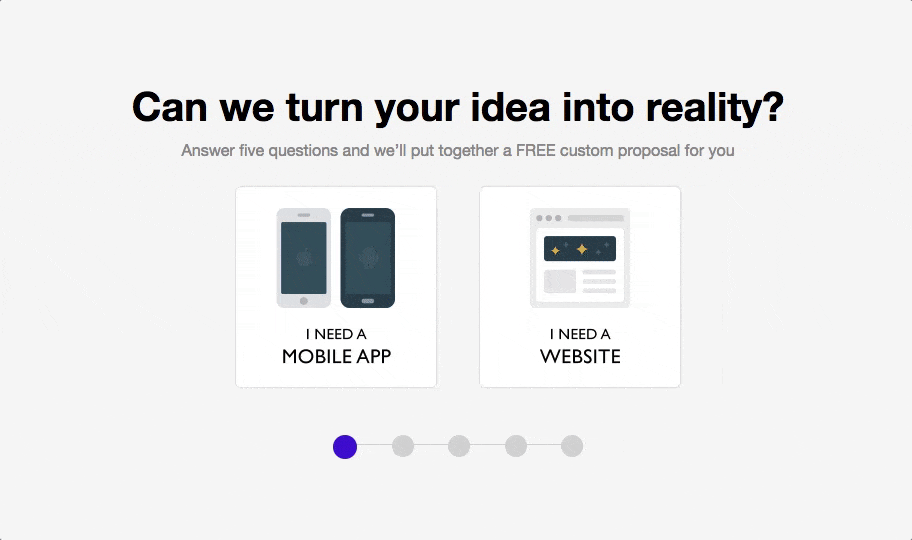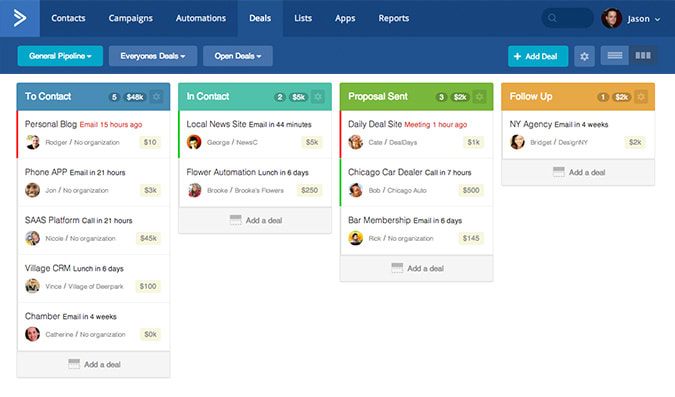With 2022 coming to a close, it’s time to start thinking about next year’s growth targets and the strategies you’ll need to place to achieve them.
For 2022, 67% of B2B marketers said their top priority was generating more sales leads, according to research (PDF) from Sagefrog Marketing Group.
However, lead generation is only step #1 of B2B business growth and marketers need to own the entire B2B customer journey by guiding prospects across the entire buying process.
Sure, this starts with lead generation but there’s a whole lot more work to be done.
B2B lead generation: Shifting the focus to quality, not quantity
I’ve been quite keen to emphasise that lead generation isn’t the only thing that matters in B2B marketing. However, this is where everything begins for you and your potential customers, so it is vitally important.
Just make sure you don’t plough all of your resources into lead generation without leaving enough for the latter stages of the customer journey (we’ll come to these shortly).
Tthe aim for B2B marketers should be prioritising the quality of leads they’re generating, instead of simply trying to maximise lead volume.
Earlier this month, Lilach Bullock published an article on Smarter Insights looking at digital marketing tactics to generate and convert more qualified leads – one of her recommendations is to invest in a conversion-optimised form builder.
As successful marketers will tell you, your form is what separates your leads from non-leads. A good form builder helps build high-converting lead capture forms. It comes with built-in analytics to help you better understand your leads and how your forms are performing. This way, it helps to eliminate the guesswork in the lead generation process.

Bullock also offers up some classic advice for B2B marketers looking to improve the quality of their leads:
- Demonstrate your unique selling proposition: When your audience gains access to your lead magnet, they should be convinced why they should buy from you and not from the competitors.
- Be perceived as highly valuable: It should add value to your readers beyond what the competition is offering. Don’t go for videos—they are very common. Instead, offer something like an e-book or coupons.
- Provide a solution to a problem: Your audiences are always on the lookout for solutions online. If your lead magnet can meet their needs, you’ll be building an email list in no time.
Lilach Bullock is one of the UK’s most influential entrepreneurs and a highly respected speaker in the marketing circuit, so this is one voice worth listening to.
For more insights into maximising high-quality leads, you can also take a look at our 5 Best B2B Lead Generation Strategies article where we closely examine lead generation using the following strategies:
- Email marketing
- Content marketing
- Search marketing
- Social media
- Multichannel marketing
As we explain in the article, these are the five marketing strategies that consistently generate high volumes of qualified leads. This has been the case for years and these are the strategies that continue to outlive the fads and trends that come and go, to keep their place at the centre of effective lead generation strategies.
B2B lead nurturing: Guiding customers along the buying process
With leads captured, your aim is then to guide them along the buying process and the journey each customer takes along this path will be different. Your mission is to identify the unique needs and expectations of your most important target customers and group leads together who share the same interests in common.
This allows you to create separate campaigns for each group and deliver messages to address that matter most to each target audience.
The thing is, your customer needs are going to change as they progress along the buying process – they’re not going to stay the same. For example, they may start focusing on the quality of a product, service or your business and then prioritise price after they’ve drawn up a shortlist of options. Then, they might start looking at extra incentives like delivery fees, special offers, guarantees and other deal clinchers.
You need to be able to address these priorities at every stage of the consumer journey.
To do this, you need a way to deliver messages at defined stages of the buying process and this is where a solid customer relationship management (CRM) platform is so important. We use ActiveCampaign as our CRM and a key factor in choosing this platform was the excellent automation features it comes with – and I’ll explain why this is so important in a moment.

Before that, let’s quickly look at the key tasks you need to handle in your B2B lead nurturing strategy:
- Lead qualification: This is where you approve or reject leads to ensure you’re only using resources on prospects that are worth it.
- Lead scoring: Assigning a lead score to prospects, which allows you to prioritise leads and focus on the most valuable prospects to your business (scores will change as leads progress along the consumer journey).
- Lead segmentation: Creating groups and assigning leads to them based on shared interests so you can target them with relevant ads.
- List mapping: Assigning segmented lists to stages of the customer journey so you can create campaigns designed to move prospects onto further stages of the buying process.
- Campaign delivery: Choosing the right channels and targeting to deliver campaigns/messages to leads at the relevant stage of the customer journey.
You can manage all of these tasks in a CRM platform like ActiveCampaign but you’re also going to need the right marketing strategies to bring everything together. For example, using Leadformly to qualify leads on your website, remarketing in Google Ads to move users along segmented lists and email marketing to ramp up your lead nurturing efforts once you capture email addresses.
If you need some help with creating and implementing these strategies, we’ve got plenty of guidance for you in the following articles:
- The Complete Guide to Lead Qualification & Scoring
- The Complete Guide to Lead Segmentation
- 5 Steps to Fixing a Leaky Marketing Funnel
- 7 Email Marketing Tips to Ramp Up Your Digital Marketing Efforts
- 15 Lead Nurturing Email Examples That Make it Look Easy
- 10 Advanced Remarketing Techniques to Increase Conversions
That should give you plenty of help with improving your lead nurturing efforts and I want to quickly talk about automation, as promised once again. All of the tasks we’ve looked at in this section can be automation, either entirely or to some extent, and this is crucial to maximising your B2B results.
Without automation, you’re limited to the number of leads your team can manually handle. This means business growth is limited to the size of your sales team but automation removes this limitation, allowing you to consistently increase the volume of leads your team nurtures. And, more importantly, how many of those leads you can turn into paying customers.
This is why automation was such a key component of our choice in ActiveCampaing as our CRM. It’s automation features are as good as any on the market but you don’t have to pay the typical enterprise fees.
B2B customer retention: Maximising the value of every customer
According to Invesp, it costs five times more to capture a new customer than it does to convince an existing one to buy again. This makes sense because you’ve already done 90% of the hard work and collected enough to data to have a strong idea of what your customers’ ongoing needs are. More importantly, you’ve already invested heavily in all of the marketing strategies to get each customer on board – so you want to maximise this investment.
All of this adds up to an important priority for B2B businesses: customer retention.
This means keeping customers engaged with your brand and turning them into repeat buyers. And, once again, in order to achieve this, you need to combine a number of existing strategies into a coordination customer retention strategy:
- Quality products/services: First of all, you need to make sure your products/services are good enough to keep customers on board – otherwise, this entire strategy is going to fail.
- Customer service: No matter how good your products/services are, customers are going to experience problems from time to time and how you deal with these is going to be a major factor in your retention rates.
- Upselling/cross-selling: Recommending related products that might interest your customers or encouraging them to commit to a more expensive purchase, longer-term commitment, etc.
- Customer feedback: Show your customers that you listen to them by asking them for feedback and actually implementing changes based on the info they give you.
- Rewards/loyalty schemes: Rewarding customers for their ongoing purchases makes them feel valued and encourages them to keep buying from you.
- User accounts: Customisable user accounts make it easier for customers to make repeated purchases, manage their orders and explore new purchase options.
- Customer reviews: You can’t please everyone or get things right all of the time but a large collection of positive customer reviews might show disgruntled customers that their unpleasant experience was a rare case and encourage them to give you another shot.
Don’t make the mistake of thinking your job is done once a customer buys from you. This is simply the first purchase in a customer journey that should span across multiple, ongoing purchases as each customer’s needs continue to evolve.
Bringing it all together
B2B marketers need to work on owning the entire customer journey, not only the early stages. Lead generation is the topic marketers can’t seem to get enough of but it’s not where the money really is. Generating leads costs a lot in terms of time, money and other resources, which you’re only going to get back if you own the latter stages of the customer journey and turn those B2B leads into paying customers.




